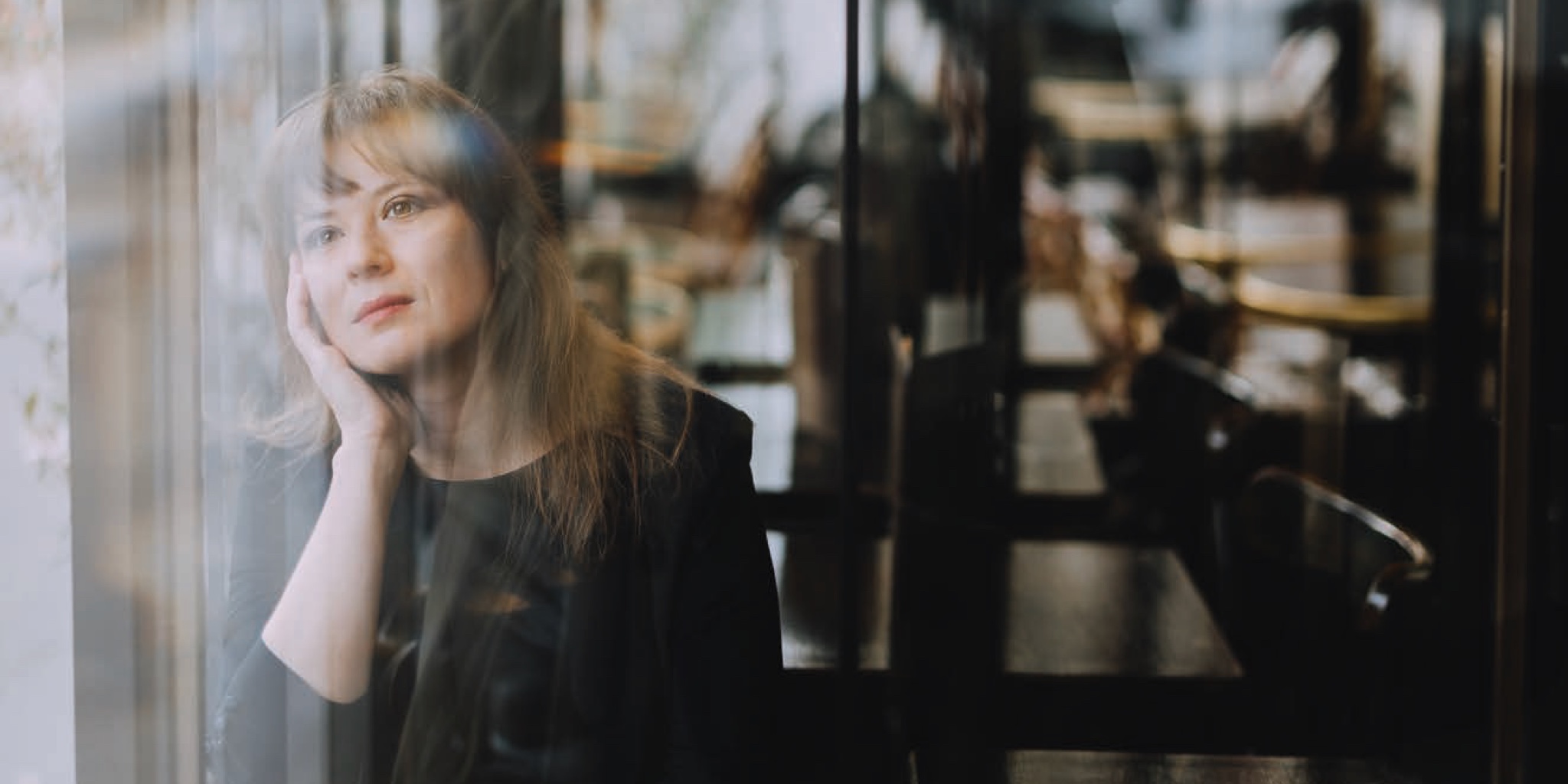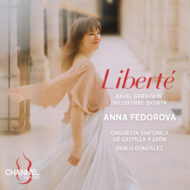This is a reposted article originally written for Positive Feedback by Rush Paul. The great team at Positive Feedback, as well as Rush himself, have kindly given us permission to repost this and you can find the original article at the link below.
Thanks to Rush and the PF team!
View Original
Anna Fedorova is, to me, one of the most exquisite pianists performing today. Her interpretative skills are subtle, inventive, and completely engaging. And her technical skills are simply amazing. When she performs, I just slide into a very happy place listening to her. Her most recent release is delightful.
Liberté, Anna Fedorova, Orquesta Sinfónica de Castilla y León, conducted by Pablo González. Channel Classics 2025 (DXD 32-bit, Stereo, MCh) Edit Master Sourced (To be released at NativeDSD on Friday, November 14, 2025)
Combining works for piano and orchestra with works for piano solo, this album is a celebration by Anna Fedorova of “liberty,” in all its various forms, as expressed in the works she has selected for this program. These works reflect the cultural and musical dialogue between France and America. And in this musical dialog, it is the influence of jazz that plays a central role. It is a tribute to French and American composers whose work transcends genres and borders.
Performed together with the Orquesta Sinfonica de Castilla y Leon under Pablo Gonzalez, the album’s core pillars are Ravel’s Piano Concerto in G major (1929-1931) and Gershwin’s Rhapsody in Blue (1924).
Also featured are short solo pieces that echo its central themes: three miniatures by Germaine Tailleferre, Time Peace—a miniature by Andrew Blickenderfer, the jazzy “Valse” from Partita No. 5 by Fedorova’s compatriot Myroslav Skoryk, 3 Preludes by Gershwin, and Moustaki’s Ma Liberté arranged for piano by Bory Fedorov. Fedorova also plays her own composition, Improvisation on a Theme of Barbara “Pierre.”
Anna Fedorova says, “The name of the album is Liberté, Freedom, as all of the pieces on the album are connected between themselves with the jazz influence, and jazz is a symbol of freedom in music and in life.”
In so many ways, this album also is a tribute to the worldwide influence of American Jazz. We have a Ukrainian pianist, a Spanish orchestra, a Spanish conductor, and American-Dutch producer, collaborating to deliver immensely pleasurable performances of music defined by multi-cultural influences that we all can celebrate.
The album opens with the sharp percussive snap of the opening lines to Ravel’s Piano Concerto in G followed immediately by the crisp syncopated notes of flute, triangle, piano, and then the brilliant announcement by trumpet that we were going to get into something fun. Then, as with the best performances of this wonderful piece of music, a languid pause and reflection on piano. If you don’t know this work, it is well worth getting familiar with it. Ravel’s paean to American jazz, and Gershwin in particular, is striking. And this performance is played as brilliantly and well as any I know—it is sharply defined, cleanly articulated, with excellent shifts of pace and dynamics to pull out all the intricacies of the piece.
Following the Ravel, Fedorova goes into solo piano mode for the next five works that I listed above. All are relatively short, but intriguing. I was particularly taken by Myroslav Skyork’s Valse that truly danced under Fedorova’s sensitive touch; the dynamic shifts were captivating as she moved from subtle and delicate to powerful and driving. And then the music shifted to Fedorova’s own somewhat dreamy Improvisation and I was lost again.
It is a recital within a concert to hear these solo piano works. A gift. Like Little Jack Horner, I feel like I’m pulling the proverbial plum from the pie.
As I was talking with Ann later, she commented simply: “Anna is wonderful.” She’s right—this is the best way to describe listening to her playing: wonderful.
Gershwin’s Rhapsody in Blue receives a rousing performance by pianist, clarinet soloist, and orchestra that defers to no one. It bears that distinctive tang that the best performances of this work deliver. The famous clarinet glissando, one of the most iconic sounds in all of American music, is credibly accomplished. Fedorova plays with power combined with the subtle nuance and delicacy required to pull off this work. The Orquesta Sinfonica de Castilla y Leon plays with precision, excellent ensemble, and panache—the woodwinds and brass in particular deliver superbly. The Gershwin 3 Preludes (1926) are played by Fedorova during the solo piano segment before she and the orchestra launch Rhapsody in Blue. The programming choice makes for very interesting listening as so many themes reappear in these Preludes, and on the album presage the larger work. They are like concise piano miniatures.
Will this performance supplant by favorite recording of this work by Earl Wild and Arthur Fiedler? No, perhaps not. But I do I find it immensely satisfying in it’s own right—it is a terrific performance with many special attributes and delicacies all its own. Of the dozen or more different recordings of this work, this performance by Fedorova places among the top two or three in my regard.
The sound quality is another tour de force by Jared Sacks. This is the large orchestral sound quality I always hope to hear and that Jared so consistently delivers. In this recording he may have placed the piano a bit more front and center in the sound field than I may prefer, but that is an artist choice with which I will not quibble. The sound of the piano is so utterly convincing I immediately dismissed the issue and instead just began to luxuriate in the richness and resonance of the excellent instrument under Fedorova’s hands, the supremely natural timbre from all of the instruments, the tremendous inner detail of the orchestra, and the superb uncompressed dynamics. As an audiophile, I was as much enamored by the sound (just purely as sound) as by the music and performances. What an ultimate treat! That the musicians were similarly so well attuned to one another and performed with such a high level of technical and interpretive level, just placed me in a very happy space. After now listening to this album from beginning to end four separate times, my enthusiasm for it has only grown.
My recommendation: get this!
For a bit of a preview, Channel Classics has posted this video of Anna Fedorova playing a portion of Rhapsody in Blue in rehearsal:



